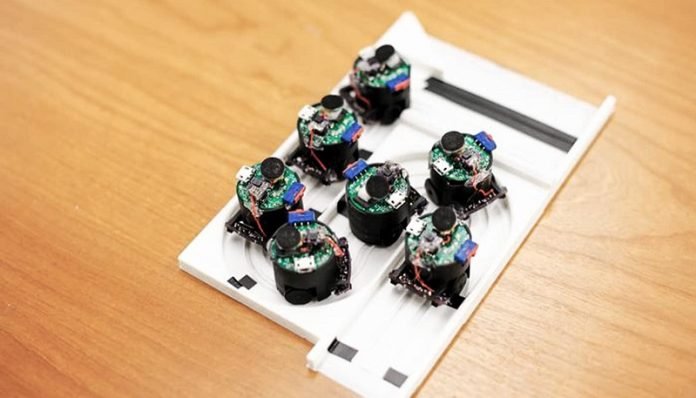
Researchers have developed a fascinating new technology that can allow smart speakers to mute or control certain areas of a room, separating different conversations even if the speakers are close to each other or have similar voices.
This is like having little robots called “Whisper Bots” that can listen to you and understand where you are in a room.
It’s pretty exciting, especially because until now, controlling sounds in this way has been very challenging.
In simpler terms, imagine having several tiny robots, like little Roombas, moving around on tables and dividing a room into different sound areas.
They can identify and follow individual speakers in a room, allowing the users to isolate and control different conversations. These bots can make it easier to understand who is talking in a room filled with several people, something even our brains find difficult to do.
These “Whisper Bots” are small, about an inch in diameter, and come out from a charging station, positioning themselves around a room.
When their job is done, they go back to their station. This means you can use them in different places and they can set themselves up without any help, making it quite convenient.
In practical terms, these “Whisper Bots” could be used in meetings instead of having one central microphone. They could provide better control over who is heard, enabling clearer and more focused conversations.
This could be especially helpful in places like conference rooms, allowing for better management of in-room audio.
The technology is novel because it can distribute a swarm of bots using only sound without needing cameras, projectors, or special surfaces, marking a significant advancement in sound control technology.
Here’s how it works: the “Whisper Bots” move around emitting high-frequency sounds like bats and use these sounds and other sensors to avoid obstacles. This allows them to position themselves in a way that maximizes accuracy in controlling sounds, differentiating, and locating the speakers easily. This is way more effective than our usual smart speakers, which have their microphones too close to each other to differentiate between different voices in a room effectively.
In tests, the “Whisper Bots” performed well in various settings like offices and living rooms and could discern different voices effectively 90% of the time. They were fast enough to process sounds for live streaming, although a bit slow for real-time communications like video calls.
Researchers are looking to further advance this technology. They hope that it can be used in smart homes to distinguish between different speakers better.
It could allow only people in an “active zone,” for example, on a couch, to control a TV using their voice. They are also exploring options to create real-world mute and active zones, enabling people in different parts of a room to hear different audio.
There is a privacy advantage to this technology as well. It does not use cameras, and it processes all the audio locally, not in the cloud, addressing privacy concerns. Users can even create a bubble around them where nothing is recorded, maintaining privacy in crowded or communal spaces.
This groundbreaking research brings technologies from science fiction closer to reality, offering innovative solutions for sound control and privacy in everyday environments.
Follow us on Twitter for more articles about this topic.



